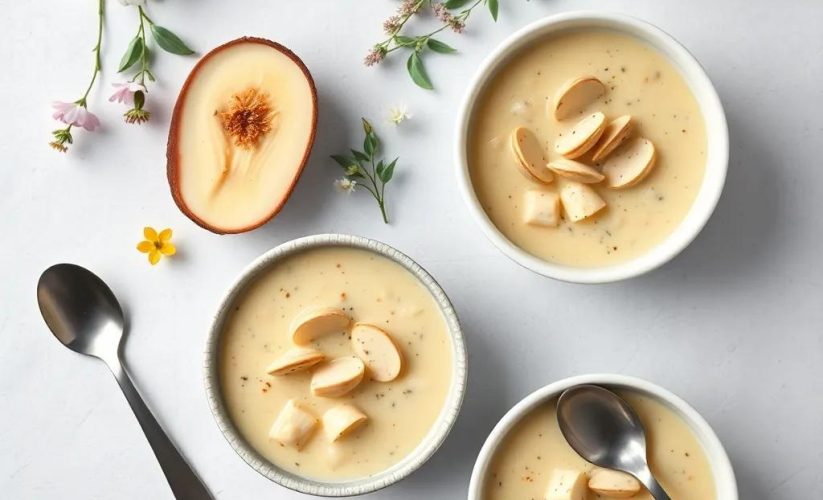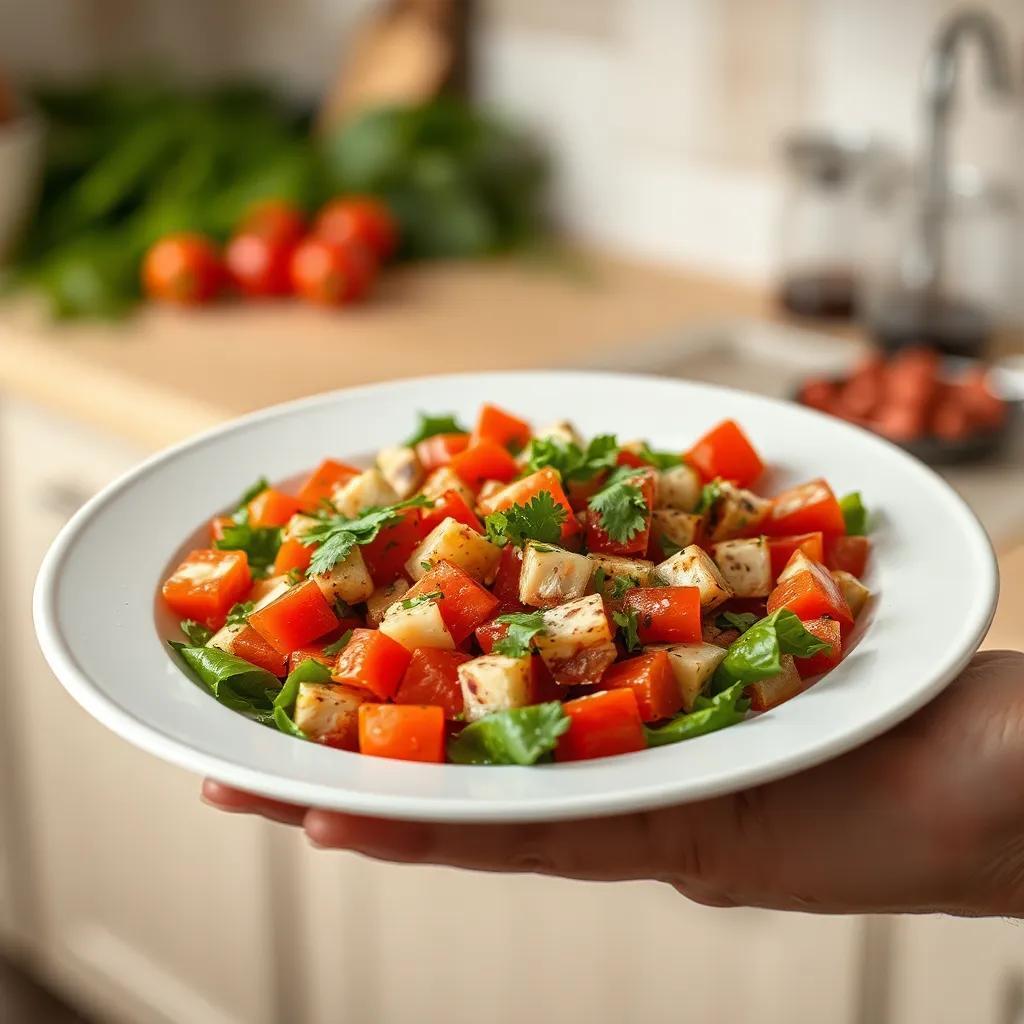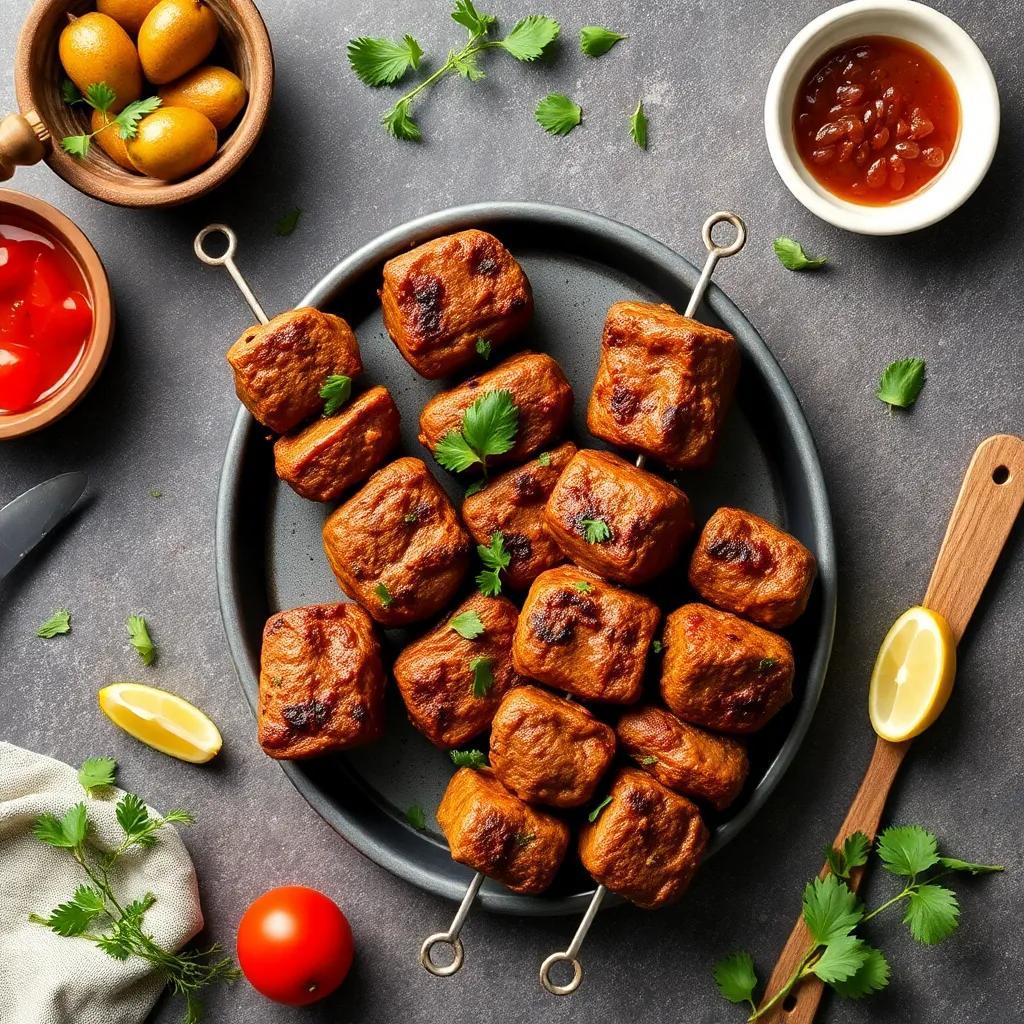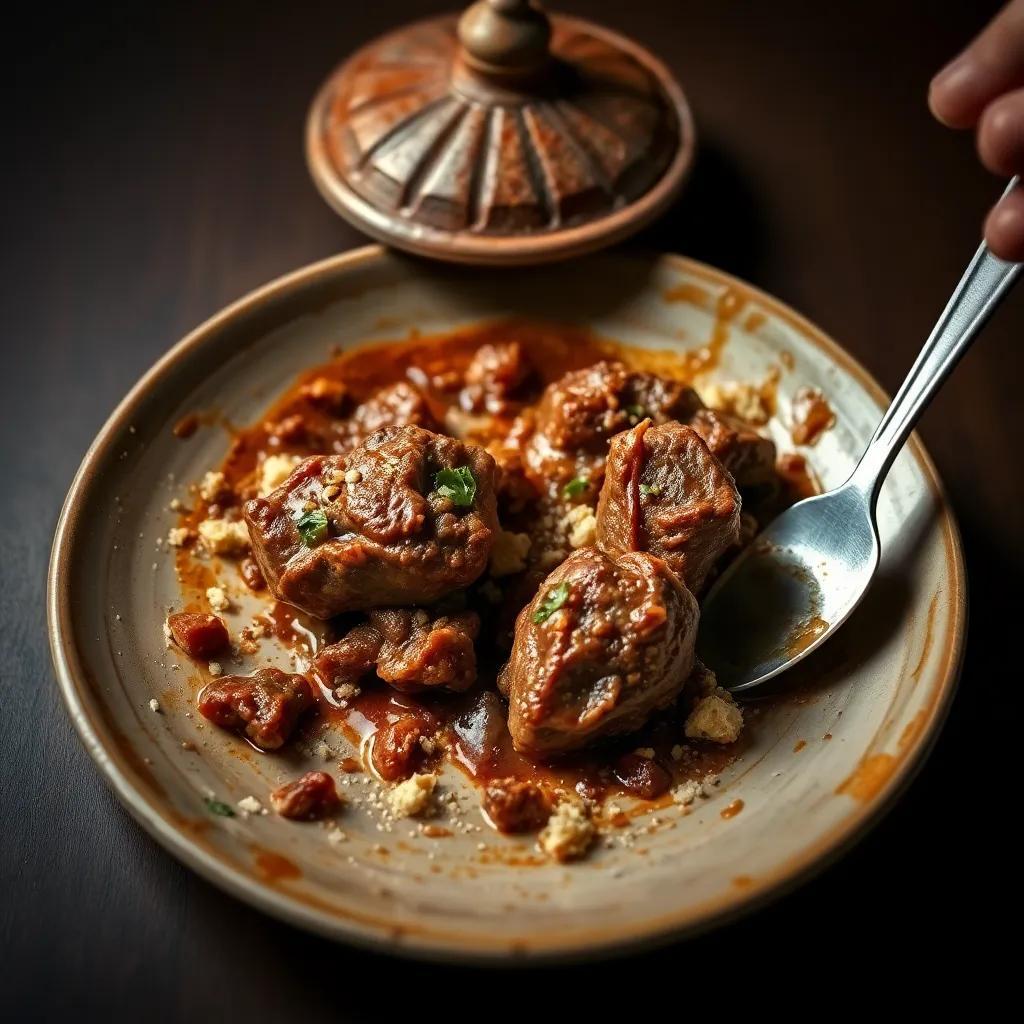Unlock the Secrets to Perfect Vegan Falafel: Easy, Crispy & Flavorful

Unlock the Secrets to Perfect Vegan Falafel: Easy, Crispy & Flavorful
🌍 Cuisine: Middle Eastern
⚙️ Difficulty: Easy
Ingredients
Nutrition Facts
180
Instructions
- Soak the dried chickpeas in a large bowl with plenty of water overnight (at least 12 hours). They will expand, so use a large bowl and enough water to cover them by a few inches.
- Drain the soaked chickpeas and pat them dry with paper towels.
- In a food processor, combine the chickpeas, chopped onion, garlic, parsley, and cilantro. Pulse until it forms a coarse, grainy mixture—do not over-process into a paste.
- Add ground cumin, coriander, baking powder, salt, black pepper, and cayenne pepper if using. Pulse a few more times to mix well.
- Transfer the mixture to a bowl and gradually add the flour, starting with 2 tablespoons. The mixture should hold together when formed into balls; add more flour if needed.
- Cover the falafel mixture and refrigerate for at least 30 minutes. This helps to firm up the mixture and makes frying easier.
- Heat about 2 inches of vegetable oil in a deep pan or skillet to 350°F (175°C). Use a thermometer for best results.
- Using wet hands or a falafel scoop, form the mixture into small balls or patties, about 1.5 inches in diameter.
- Carefully drop the falafel balls into the hot oil in batches, avoiding overcrowding the pan.
- Fry for about 3-4 minutes per side or until golden brown and crispy. Use a slotted spoon to turn them halfway through cooking.
- Remove the falafel with a slotted spoon and drain on paper towels to remove excess oil.
- Serve warm with tahini sauce, fresh vegetables, or in pita bread with your favorite condiments.
Serving Suggestions
- Serve falafel wrapped in warm pita bread with lettuce, tomato, cucumber, and tahini sauce for a classic sandwich.
- Accompany falafel with a fresh tabbouleh or fattoush salad for a refreshing side.
- Use falafel as a protein-packed topping on a green salad with lemon vinaigrette.
- Enjoy falafel with hummus and pickled vegetables as part of a mezze platter.
- Serve with a drizzle of garlic yogurt sauce or vegan tzatziki for extra flavor.
- Make falafel bowls by serving over rice or quinoa with roasted vegetables and a drizzle of hot sauce.
Table of Contents
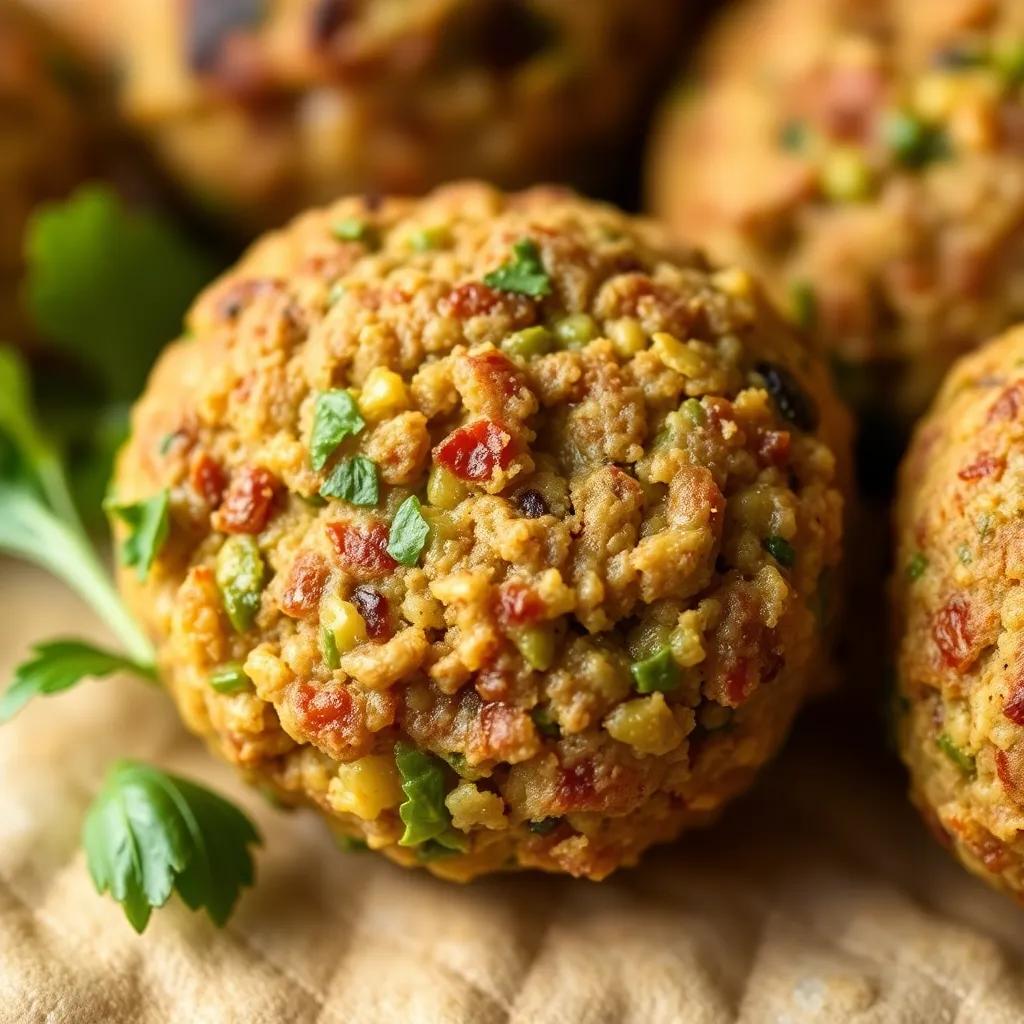
Intro
There’s something truly special about falafel—a bite-sized marvel that’s crisp on the outside, tender and flavorful on the inside, and endlessly satisfying. This recipe unlocks the secrets to creating perfectly golden, crunchy vegan falafel that anyone can whip up with ease, whether you’re a seasoned cook or a kitchen newbie. What makes this falafel stand out isn’t just its delicious taste, but the simple process that delivers authentic Middle Eastern charm without fuss or fancy ingredients.
Perfect as a wholesome appetizer, a quick snack, or even the centerpiece of a vibrant meal, these falafels bring versatile magic to your table. Whether you’re hosting friends for a mezze spread, packing a lunchbox, or just craving something cozy and delicious, these falafels hit the spot with their alluring blend of herbs, spices, and that coveted crackling crust. Plus, embracing plant-based goodness means enjoying a meal that feels light yet nourishing, with an exciting texture and flavor profile that’s endlessly adaptable to your personal taste.
So, if you’re ready to elevate your cooking with a recipe that’s as rewarding to make as it is to eat, dive in and discover how easy it is to create crispy, flavorful vegan falafel that will have everyone asking for seconds.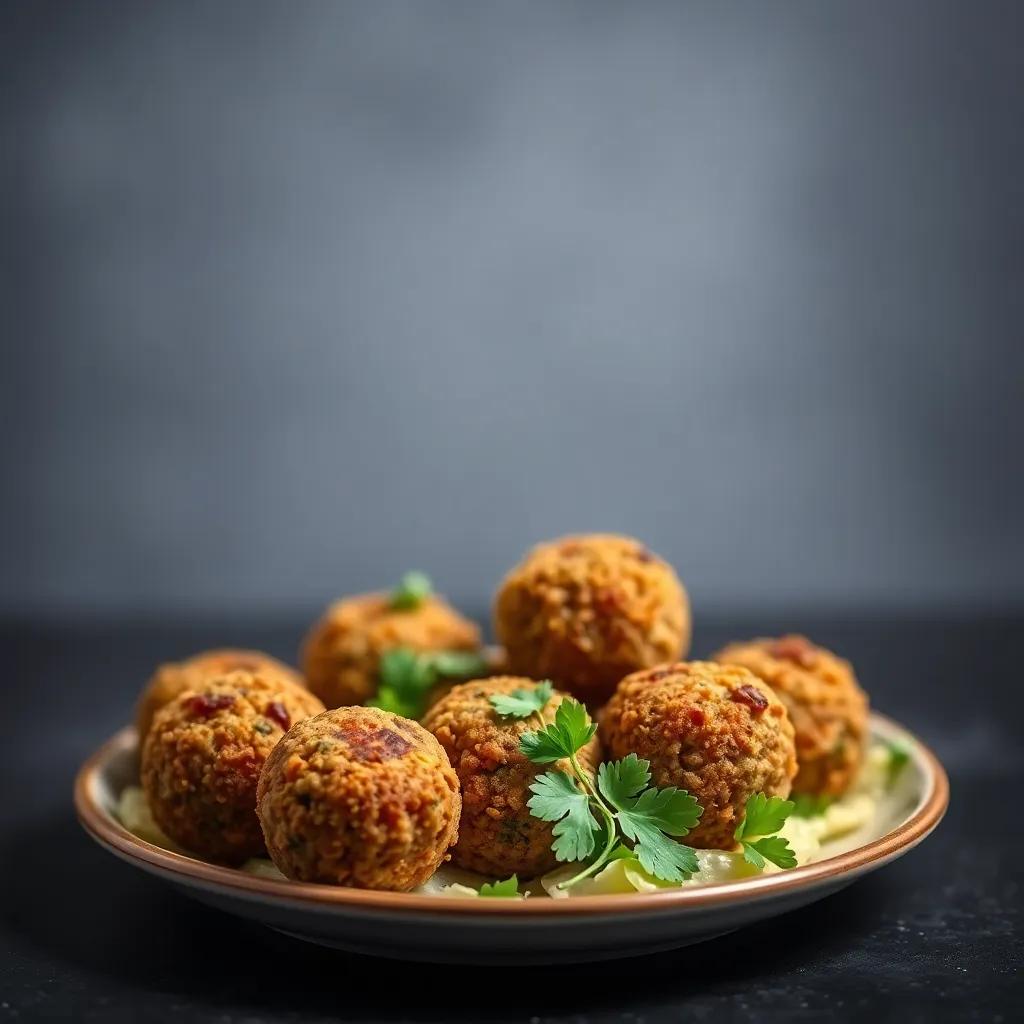
Ingredient Notes
One of the stars of any great falafel is the humble chickpea, but not just any chickpea will do. Using dried chickpeas soaked overnight, rather than canned, is key to achieving that ideal texture—a crisp exterior with a tender, yet slightly grainy interior. When soaked properly, the chickpeas expand, soften just enough to bind when processed, but still retain enough bite for a satisfying falafel. If you’re short on time, quick-soaking techniques exist, but for best results, patience pays off here.
Fresh herbs like parsley and cilantro are also indispensable. Beyond their vibrant green hue, they infuse the falafel with bright, fresh notes that cut through the earthiness of the chickpeas and spices. When selecting these, look for bright, unblemished leaves without wilting—the fresher, the better. If fresh is not an option, frozen herbs can be a decent backup, but adjust quantities slightly as their flavor tends to be more muted.
Spices—especially ground cumin and coriander—bring warmth and complexity to the falafel flavor profile. These should be freshly ground or purchased in small quantities for maximum aroma and potency. Pre-ground spices that have been sitting on shelves for months may leave your falafel tasting flat. For a subtle heat boost, a pinch of cayenne pepper or chili flakes can be added, offering delightful depth without overwhelming the other flavors.
Finally, the choice of flour—typically all-purpose or chickpea flour—acts as the binder. Chickpea flour maintains the vegan integrity and enhances the falafel’s nuttiness, while all-purpose flour may improve binding strength for some cooks. Feel free to experiment, and if you need gluten-free options, chickpea flour or other gluten-free binders like rice flour or a small amount of ground flaxseed can be great alternatives.
Each of these ingredients plays a vital role, harmonizing texture and flavor to elevate your falafel from ordinary to irresistibly crispy and flavorful. Selecting quality components and understanding their function is your secret weapon on the path to falafel mastery.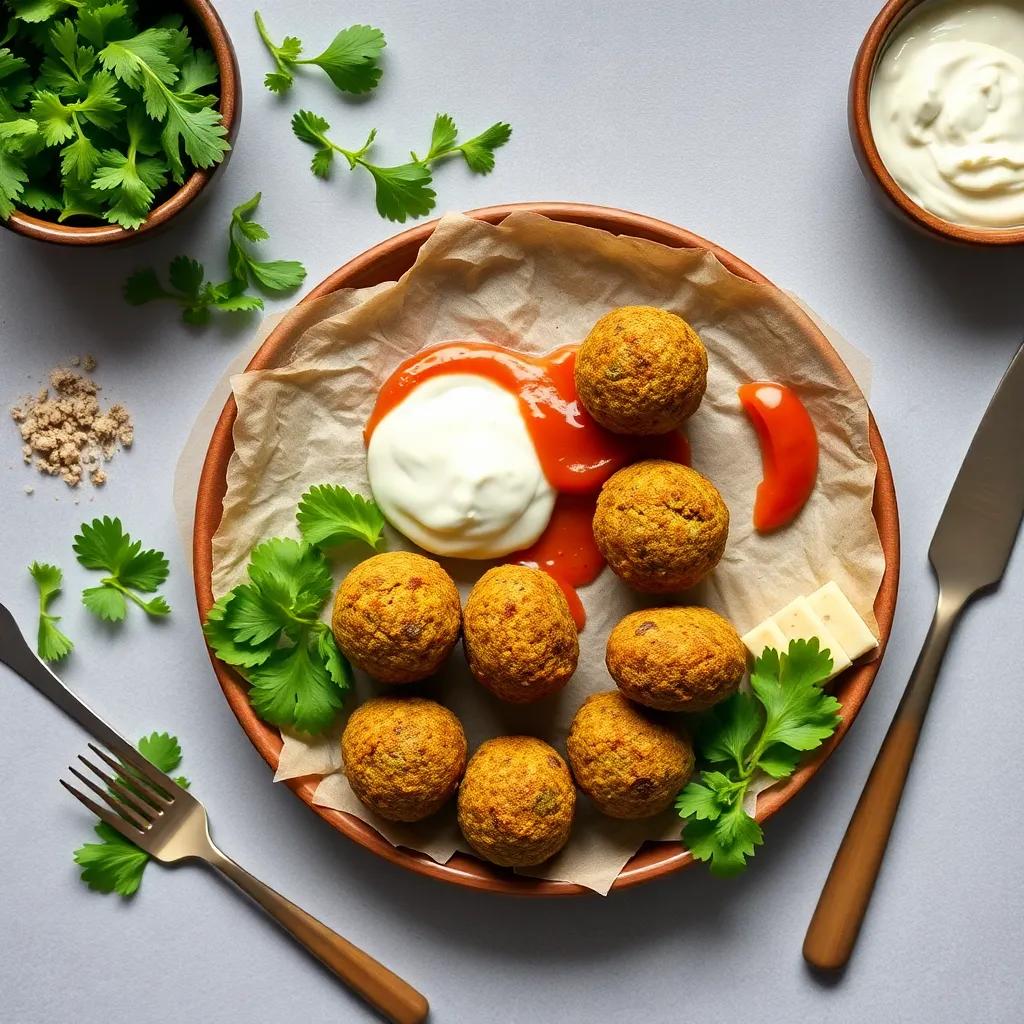
Tips & Variations
Mastering the art of vegan falafel is as much about technique and thoughtful tweaks as it is about the ingredients themselves. Here are some pro-level tips and creative variations to help you customize your falafel experience and make every batch uniquely yours:
- Texture is Everything:
The key to perfectly crispy falafel lies in the mixture’s consistency. If the mixture feels too wet or crumbly, it won’t hold shape well and might fall apart in the oil. Gradually add flour—start with 2 tablespoons and add more sparingly if needed—to achieve a firm, moldable dough. Remember, the chickpeas should remain coarsely ground, not pureed into a paste, to maintain that satisfying grainy interior.
- Chill Before Frying:
Letting the falafel mixture rest in the refrigerator for at least 30 minutes firms it up, making it easier to shape and less likely to disintegrate in the hot oil. If time allows, refrigerate even longer—an hour or two can enhance binding and flavor melding.
- Oil Temperature Matters:
Use a candy or deep-fry thermometer to maintain oil at around 350°F (175°C). Too hot, and the falafel will brown too quickly on the outside but remain undercooked inside; too cool, and they absorb excess oil, becoming greasy rather than crisp. Adjust your stove’s heat as necessary to keep the temperature steady.
- Shaping Style:
While traditional falafel balls are round, you can shape them into patties for easier flipping and a different texture profile. Patties also pair nicely in wraps and sandwiches, creating more surface area for crispy edges.
- Bake or Air Fry for a Healthier Twist:
If frying isn’t your preference, bake your falafel on a parchment-lined tray at 400°F (200°C) for 20-25 minutes, flipping halfway through. For even crisper results without deep frying, use an air fryer at 375°F (190°C) for 12-15 minutes, shaking the basket occasionally. While traditional pan-fried falafel tends to have the highest crunch factor, these methods can be excellent alternatives with less oil.
- Custom Spice Blends:
Feel free to experiment with the flavor profile by adding warm spices like smoked paprika, ground turmeric, or a dash of ground cinnamon for subtle aromatic complexity. For a more herbaceous note, swap cilantro for dill or even add fresh mint for a refreshing twist. If heat is your thing, increase chili flakes or add a touch of harissa paste to the mix.
- Binding Alternatives for Gluten-Free or Grain-Free Diets:
Chickpea flour is ideal for keeping falafel gluten-free. For those avoiding all flour, ground flaxseed mixed with water (flax egg) or a little mashed sweet potato can help bind the mixture. Keep in mind that these substitutions may slightly change texture and flavor, so adjust seasoning accordingly.
- Add-Ins for Extra Texture and Flavor:
Try folding in finely chopped vegetables such as grated carrots, zucchini (squeezed dry), or green onions for additional moisture and brightness. Toasted sesame seeds can add a nutty crunch on the exterior when mixed into the batter or sprinkled on top before frying.
- Sauce & Serving Variations:
Elevate your falafel by pairing it with inventive sauces beyond the classic tahini. Think vibrant avocado crema, spicy harissa yogurt (vegan, if preferred), or a cooling cucumber-mint raita. Serving falafel alongside pickled veggies or spicy slaws adds an exciting contrast in texture and flavor that transforms every bite.
- Batch Prep Tips:
For stress-free entertaining or meal prep, shape falafel and freeze them uncooked on a baking sheet, then transfer to a freezer-safe bag. When ready to cook, fry directly from frozen, adding a minute or so to the cooking time. This makes weekday dinners or unexpected guests a breeze.
By embracing these tips and variations, you can tailor your falafel to suit your taste preferences, dietary needs, and cooking style, ensuring each batch is a delightful, personalized culinary creation.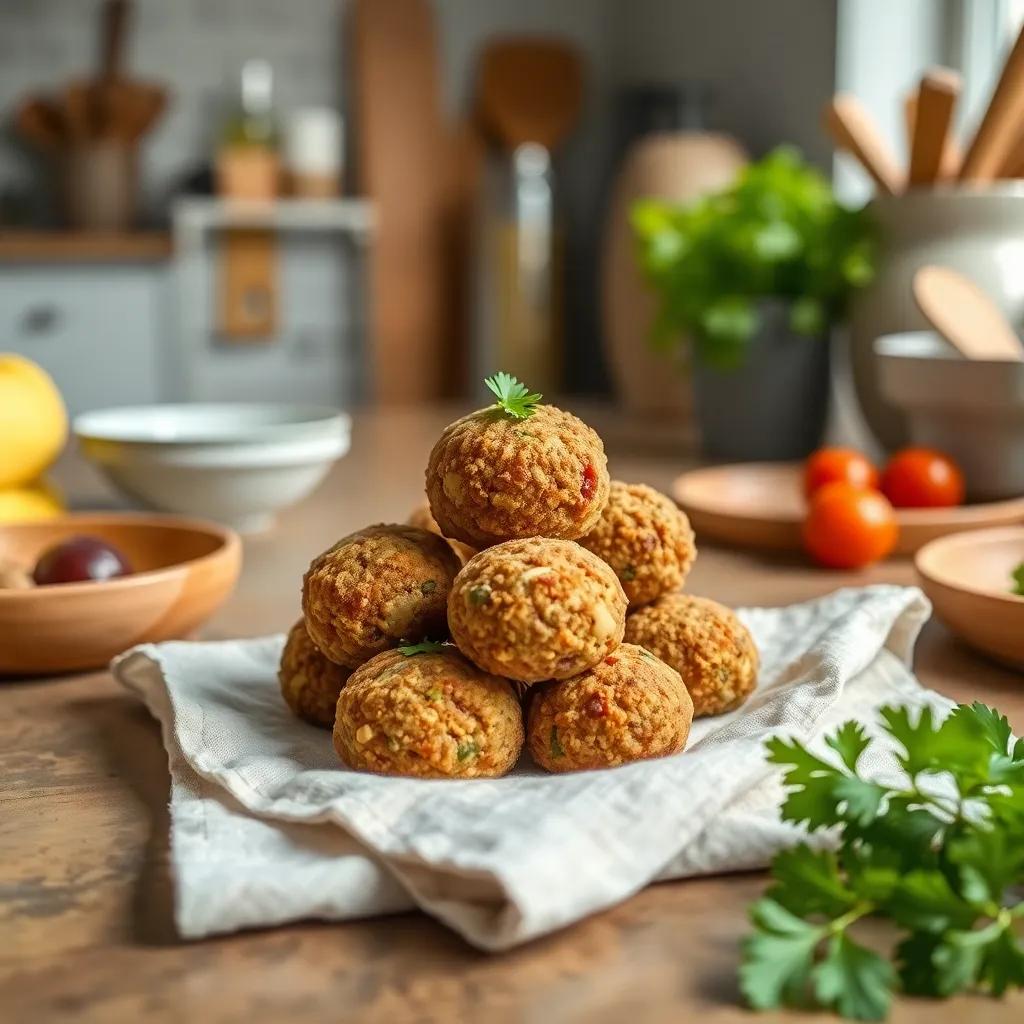
Leftovers & Storage
Leftover vegan falafel is a delightful bonus that keeps your kitchen adventures rewarding beyond mealtime. To preserve their crispy exterior and tender interior, proper storage is key. Once your falafel have cooled to room temperature, transfer them gently to an airtight container. Layering paper towels between falafel balls helps absorb excess moisture and prevents sogginess.
In the refrigerator, stored this way, falafel will stay fresh for about 3 to 4 days. When ready to enjoy, reheat them in a preheated oven or toaster oven at 350°F (175°C) for 8–10 minutes. This method revives their crispness far better than microwaving, which tends to make them soft or rubbery.
For longer-term storage, falafel freeze beautifully and maintain their flavor and texture well. Arrange cooled falafel on a parchment-lined baking sheet without crowding and freeze for a couple of hours until firm. Then transfer to a freezer-safe zip-top bag or airtight container. Properly stored, they keep well for up to 2 months.
Cooking falafel straight from the freezer is easy—simply fry or bake them a few minutes longer than fresh ones, adjusting time until heated through and crisped to your liking. This makes prepping a large batch in advance a real time-saver for quick lunches, snacks, or unexpected guests.
If planning to pack falafel for lunches or picnics, let them cool completely, then wrap in parchment paper and store in an insulated container with an ice pack if not eating immediately. Include fresh accompaniments like chopped veggies or tahini sauce on the side to keep flavors vibrant.
By embracing these storage tips, you can turn your delicious vegan falafel into a versatile, make-ahead staple — effortlessly adding a flavorful, protein-packed touch to meals throughout your week.
Behind the Recipe
Falafel carries a rich history that spans centuries, rooted deeply in Middle Eastern culinary tradition. Originally believed to have been created as a humble street food in Egypt, falafel quickly traveled across the region, becoming a beloved staple from the Levant to the Mediterranean. Its story is one of simple ingredients transformed through skill and care—dried chickpeas, fragrant herbs, and bold spices—into golden morsels that offer a satisfying blend of texture and flavor.
For many, falafel is more than just food; it’s a cultural symbol of hospitality and communal eating. Whether served at bustling markets, family gatherings, or festive meals, falafel often inspires connection and sharing, bringing people together around a plate. This recipe honors that tradition by emphasizing both authenticity and accessibility—proving that even home cooks far from the Middle East can conjure these crispy delights with ease.
On a personal note, perfecting vegan falafel has been a journey of experimentation and appreciation. The secret lies not in complicated steps but in embracing the balance of coarse chickpeas and fresh, vibrant greens, combined with just the right spices. Refrigerating the mixture before frying has been a game-changer, helping to create that coveted crunch while maintaining a tender interior—a technique inspired by countless hours watching falafel artisans at work and fine-tuning the method to fit modern kitchens.
Ultimately, these falafels invite you not only to savor a classic Middle Eastern delicacy but also to partake in a timeless story—where tradition meets innovation, and simple ingredients become extraordinary through care and passion. Each bite echoes both history and home, waiting to be discovered anew on your plate.
FAQ
Can I make falafel without soaking the chickpeas overnight?
What are some great substitutes if I don’t have fresh herbs?
Is it possible to bake falafel instead of frying?
How should I store leftover falafel to keep them crisp?
Can I freeze falafel for later use?
What are some easy ways to customize the flavor of vegan falafel?
Can I make falafel gluten-free?
Time to Dig In
Now that you’ve uncovered the secrets to making perfectly crispy, flavorful vegan falafel, it’s time to bring this delightful dish into your kitchen. Whether you’re serving it as a quick snack or a centerpiece for a wholesome meal, these falafels promise to satisfy both your taste buds and your cravings for something wholesome and vibrant.
Give the recipe a try, and don’t be shy—share your experience, rate how it turned out, or tell us about your own creative twists. Your flavorful journey could inspire others, and we’d love to hear all about the falafel magic you create!

